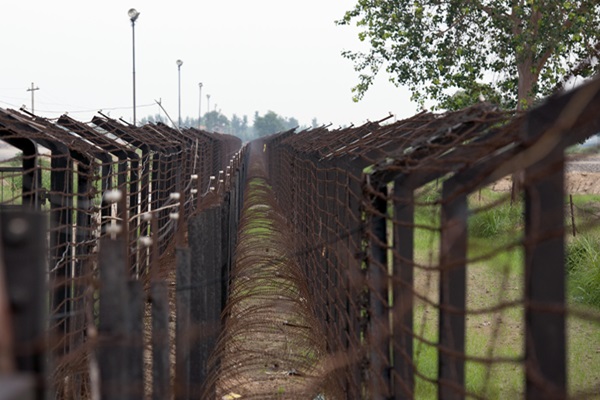.png)
Jean-Pierre Landau, a former deputy governor of the Bank of France, is a professor at Sciences Po.
September 10, 2025 at 3:24 PM IST
France’s government has now fallen after losing a parliamentary confidence vote brought by Prime Minister François Bayrou in a failed attempt to force the National Assembly to reckon with the country’s fiscal troubles. By ousting Bayrou’s team, the opposition – comprising both the left and the right – appeared to deny the need for fiscal adjustment.
France’s fiscal position is deeply unbalanced. Last year, the country’s total deficit reached €169.6 billion ($200 billion), or 5.8% of GDP. With public debt at 113% of GDP, the need for adjustment truly is real.
On the other hand, France is also the only major OECD country to have enacted a deep structural reform – specifically, far-reaching changes to its pension system – since the outbreak of the COVID-19 pandemic. And while France emerged from the last decade in a weaker fiscal position, the recent ballooning of its national debt fits within a broad global trend, which has also enveloped the United States and Germany as well.
And yet, two successive governments have chosen to portray France’s fiscal position largely in near-catastrophic terms. Finance Minister Éric Lombard recently went so far as to suggest that France might require an International Monetary Fund bailout, though he later retracted his statement.
This goal was to convince voters to support the government’s proposed budget, which would significantly reduce public spending in 2026. It would suspend the indexation of most public expenditures (including pensions) to inflation and eliminate two public holidays. It was a good fiscal-consolidation package, neither especially regressive nor progressive, but it has proved highly controversial.
But overdramatizing the situation was a tactical mistake. It rarely works in democratic societies. On the contrary, it tends to breed mistrust, fatigue, and defiance. Citizens want to show they have choices. They stage protests, vote against incumbents, or disengage from politics.
We have seen this dynamic at work when it comes to climate policy. Instead of presenting the merits and benefits of fighting global warming, governments and international organizations often stress dire warnings of impending catastrophe. But forcing interventions onto citizens, especially those viewed as costly or unfair, based on a Hobson’s choice – “It is this or climate doom” – has often triggered backlashes, including in France, where the “yellow vest” protest movement emerged in 2018 in response to fuel-tax hikes.
The same logic applies to fiscal policy. Debt and climate are both issues that require long-term vision and a sense of intergenerational justice. Yet, time and again, policymakers have sought to bypass this complexity and simply scare people by telling them they stand on the edge of an abyss.
It is naive to believe that populations can be driven into constructive action by fear. Eighteen years ago, the prime minister at the time proclaimed that France was bankrupt. Since then, the debt has doubled. Eminent personalities and official bodies and agencies periodically issue dramatic warnings, which are broadly ignored.
Today, the French appear to be responding to debt fears largely with nihilism. A nationwide demonstration is planned for September 10, not to advance a specific program or solution, but rather to “block everything.” This can hardly be considered progress for those who would like to see France’s public finances put on a more sustainable footing. When populist movements in Latin American countries, such as Argentina, Peru, and Venezuela, have used external debt crises as rallying cries against mainstream politics, the results have often been destabilizing.
While ordinary citizens largely ignore their government’s gloomy narratives, financial markets have taken note. The yield on 30-year French government bonds has reached its highest level since 2011, and the yield on ten-year bonds is at Italian levels. This should not be surprising, given the importance of perceptions in assessing financial risk. When a government insists that its national debt is unsustainable, investors and rating agencies are inclined to believe it.
France does need strong and rapid fiscal adjustment. But the reasons why have yet to be explained to the French people. Ministers describe in arithmetical terms the sad reality that debt service now consumes a larger share of the budget than education. But the sad fact is that few voters pay attention. Instead, people should be reminded of the protections they received during the COVID-19 pandemic. The government’s commitment to do “whatever it takes” prevented a collapse of the economy and preserved jobs. It was costly. It had to be done. But some budget consolidation is now warranted.
The probability of a similar crisis in the next decade – whether natural, geopolitical, or health-related – is high. This is why France must regain some fiscal space as soon as possible: to protect the population and the economy against a future conjunction of bad circumstances – not to please Brussels or Washington. Should another shock come, the government must be in a position to provide people with the same amount of support that was offered during the pandemic. Its ability to do so cannot simply be taken for granted.
The art of politics is to make the necessary acceptable. By abandoning measured communication in favor of crude fear-mongering, Bayrou’s government manufactured its own debt impasse – and now its own demise.
© Project Syndicate 1995–2025




